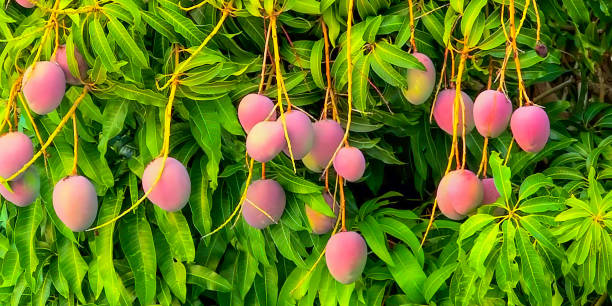Mangoes are a staple of the Indian summer, celebrated as the ‘king of fruit’ and enjoyed by millions in various forms – raw, as a dessert, in drinks, chutneys, or curries. Typically, the price of mangoes in India ranges from Rs 100 to Rs 200 per kilogram during the season. However, one variety, the Miyazaki mango, can fetch an astonishing Rs 2.5 lakh to Rs 3 lakh per kilogram. So, what makes this particular mango so special and expensive?
The Miyazaki mango, known as Taiyo-No-Tamago or “Egg of the Sun” in Japan, originates from the Miyazaki city in Japan’s Kyushu province. This luxurious fruit dates back to the 1980s when researchers from Miyazaki University, in collaboration with local farmers, developed it. Some reports suggest that an earlier variety of this mango existed as far back as 1870 during the Meiji period in Japan.
The Miyazaki mango is renowned for being cultivated in a highly controlled environment that requires specific conditions, including a warm climate, fertile soil, and clean water. These factors contribute to the fruit’s unique qualities and high price. In India, a few farms have managed to replicate these conditions, allowing the cultivation of this rare and expensive mango.
Unlike regular green or yellow mangoes, Miyazaki mangoes have a distinctive appearance. They turn from purple to a flaming red when ripe, resembling an egg in both shape and color, which is why they are called the “Egg of the Sun.” The fruit is known for its exceptional taste, which combines sweetness and a rich, juicy texture. Additionally, it has a longer shelf life compared to other mango varieties.
The rarity of the Miyazaki mango in India adds to its exclusivity and high price. While India produces around 1,500 varieties of mangoes every summer, according to the National Horticulture Board, Miyazaki mangoes are seldom seen in the country. This scarcity, combined with the meticulous cultivation process, drives the price up significantly.
Last year, the Miyazaki mango was showcased during mango festivals in Siliguri and Raipur, drawing significant attention and highlighting its luxurious status. These festivals serve as platforms to introduce and promote such rare varieties to a broader audience, increasing awareness and demand.
In Japan, the Miyazaki mango holds a special place not only because of its taste and appearance but also due to its cultural significance. The fruit symbolizes prosperity and is often given as a premium gift, especially during the peak harvest period between April and August.
The cultivation of Miyazaki mangoes in India, though limited, has an economic impact. Farmers who manage to grow this variety can earn substantial profits, providing a lucrative opportunity for those who can invest in the necessary infrastructure and meet the stringent growing conditions.
As awareness of the Miyazaki mango grows, there is potential for increased cultivation in India. This could lead to more farms attempting to replicate the ideal conditions needed for growing this exquisite fruit, possibly making it more accessible in the future while maintaining its luxurious status.
In conclusion, the Miyazaki mango is a marvel of agricultural excellence, combining unique cultivation techniques, exceptional taste, and cultural significance to justify its high price. While it remains a rare and luxurious fruit in India, its growing popularity may pave the way for broader availability and appreciation among mango enthusiasts.

